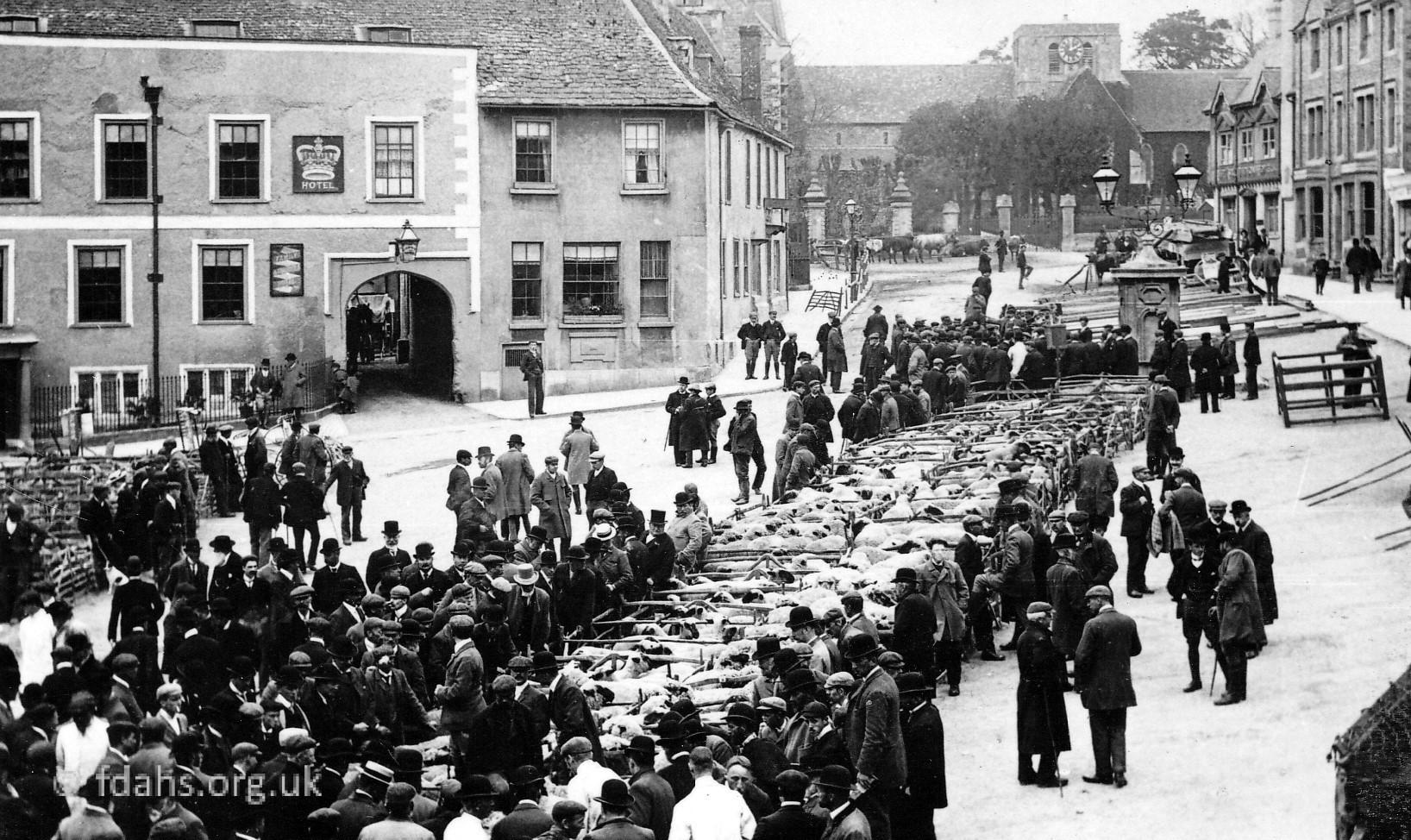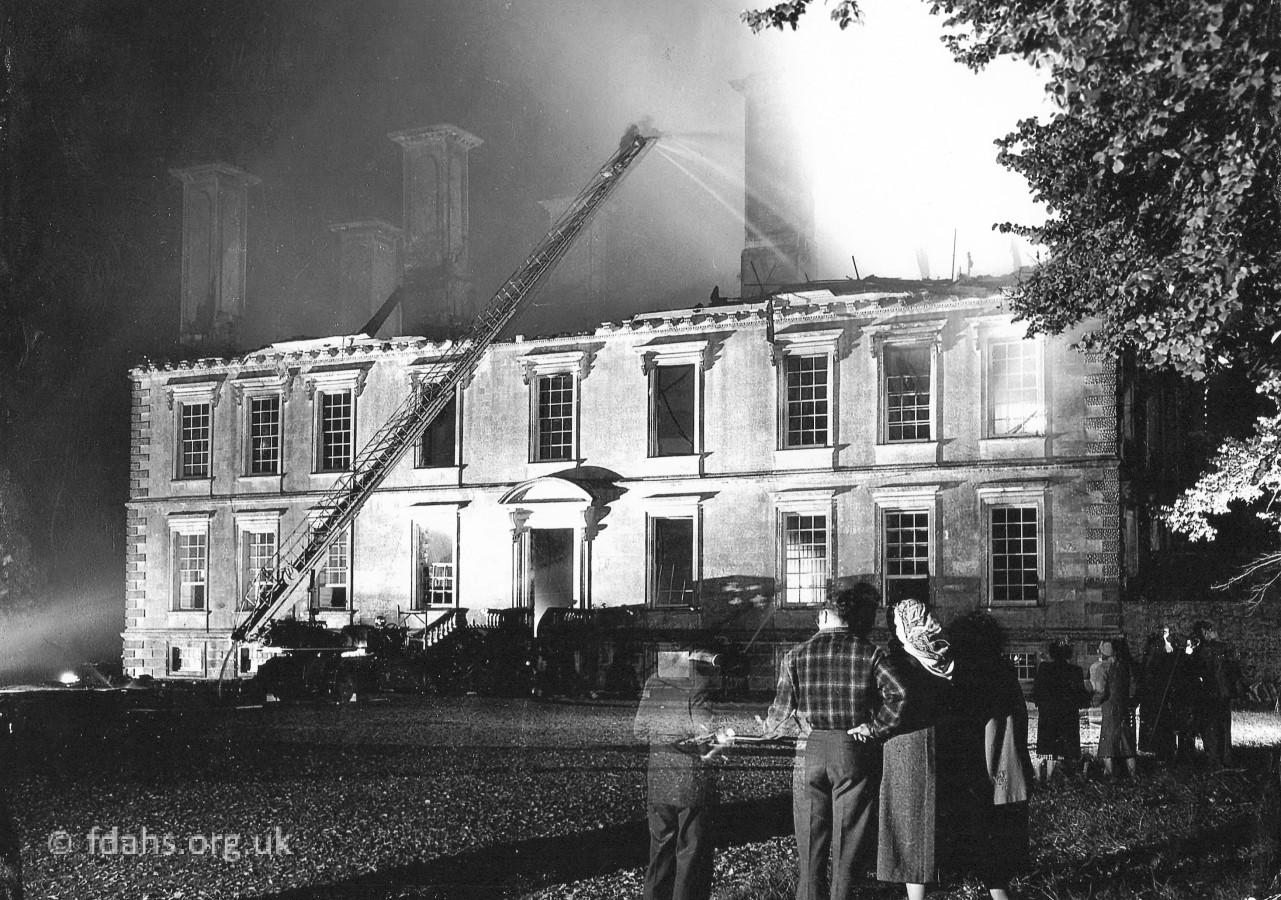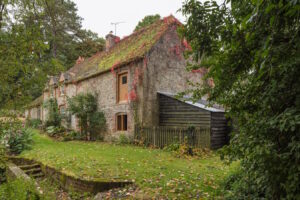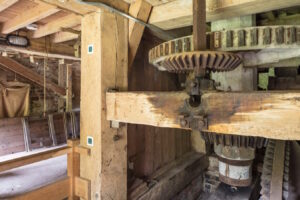Coleshill is a village on the road to Highworth, situated on the top of the next hill after Badbury Hill and a little under 4 miles south-west from Faringdon. The 2011 Census recorded the parish’s population as 156. The village lies on the hill beside the River Cole, which drains into the Thames just below Lechlade. The village is now part of the Buscot and Coleshill Estate, which totals some 7,500 acres comprising of 11 farms, 290 acres of in hand woodland, and 550 acres of woodland let to the Forestry Commission. The estate, including the villages of Buscot, Coleshill and Eaton Hastings is now almost entirely owned by the National Trust (only 4 houses are in private ownership), a total of 151 cottages. (Colleshylle c.950: OE/Latin collis ‘hill’; OE/Anglo-Saxon hyll ‘hill’; or maybe just a hill farm occupied by the Cole family.)
Coleshill Village
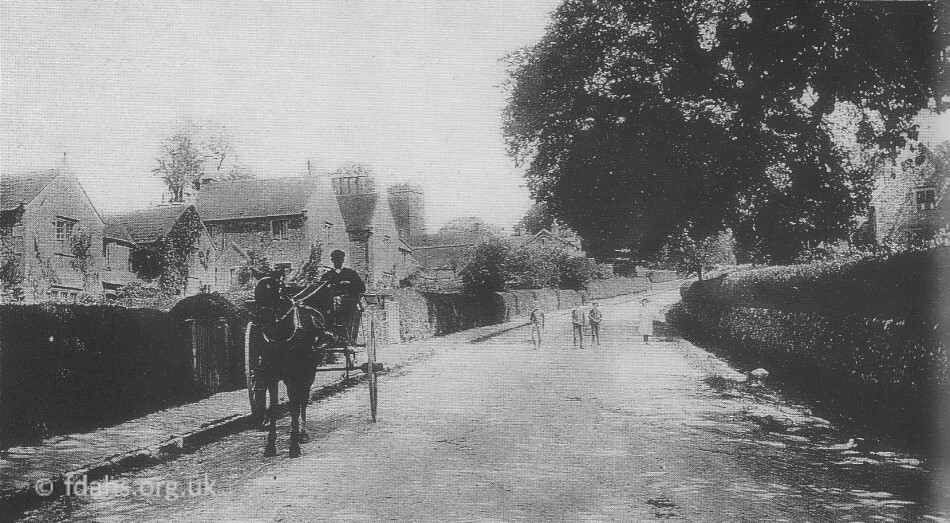
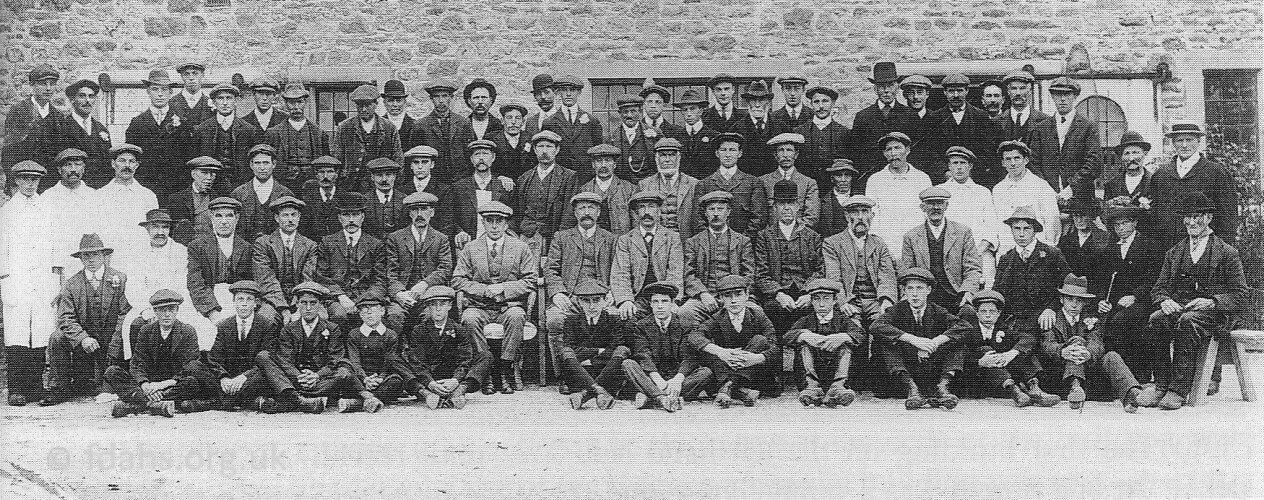
Coleshill House
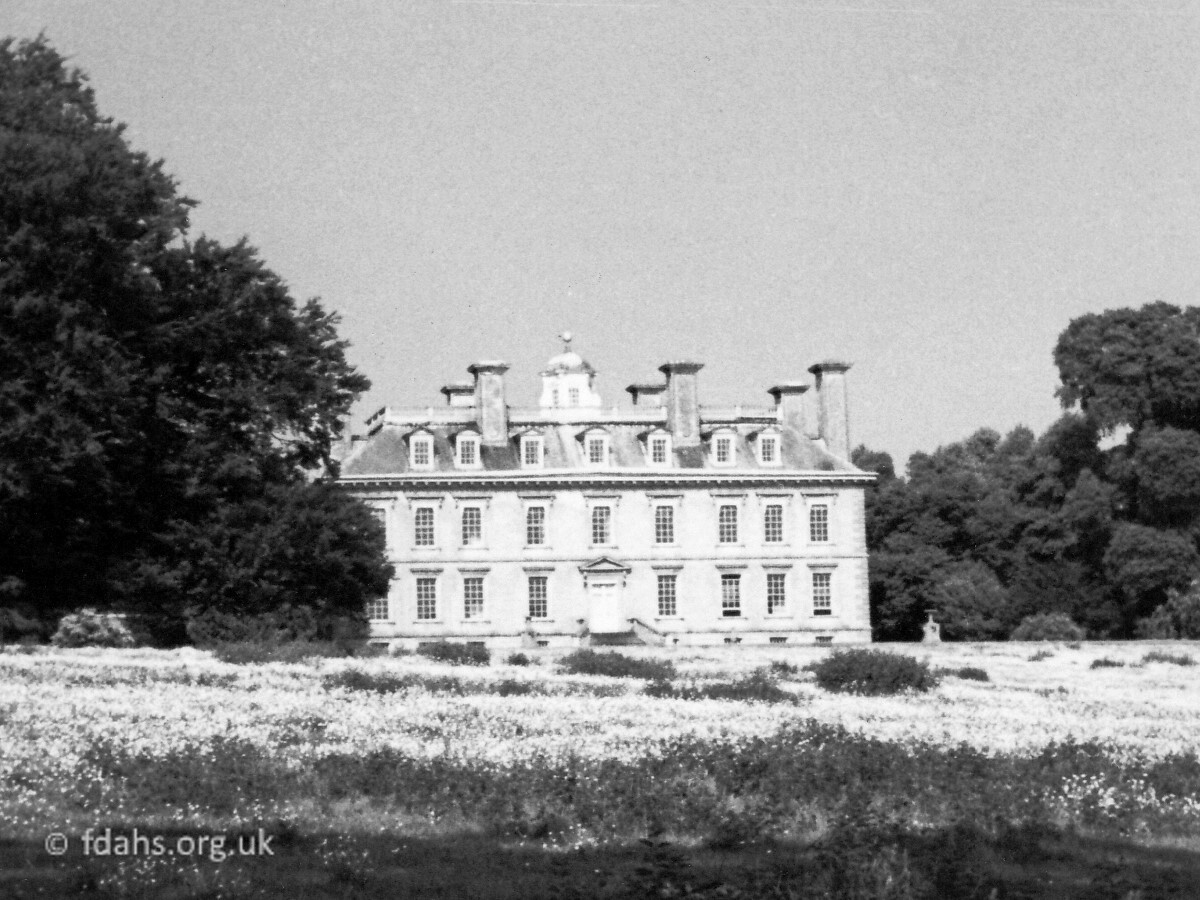
Coleshill House was built between 1650-62 for Sir George Pratt (1598–1673), designed by one of Inigo Jones’ pupils, and built by Pratt’s cousin the architect Sir Roger Pratt. The house had 365 windows, one for every day of the year.
In 1673, the house was inherited by George’s daughter, Mary. Her earlier marriage to Thomas Pleydell of Shrivenham, four years before he died in 1670, now brought the house into the Pleydell family. Their grandson, Mark Stuart-Pleydell (1692-1768) inherited from his father, a second Thomas, in 1727. He set about making major restorations and improvements to the house and gardens. His principal concerns in the 1740s was to improve the water supply both to the house and the gardens.
In 1748, Mark’s daughter, Harriot married William Bouverie (1725-1776), who became the 1st Earl of Radnor in 1765. Their son, Jacob Pleydell-Bouverie, 2nd Earl of Radnor (1750-1828) inherited the estate from his grandfather, Sir Mark Stuart-Pleydell, when he died in 1768.
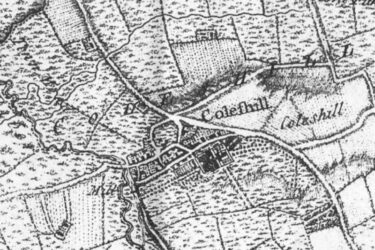
In the 1780s/90s, Jacob had the old village road (dotted track on map?), which run alongside the house and terraced gardens closed off and the route diverted along the Faringdon turnpike road. His aim was to enlarge the park and distance the house from the public road and the village itself. This also pushed the village further from the house, demolishing cottages along the way. Many changes were made to the grounds, undoing some of that done by his grandfather, Sir Mark back in the 1740’s. He even re-routed part of the River Cole to make it more visible from the house, altering the County and Parish boundaries between Berkshire and Wiltshire. The original route of the river was restored in 1995. 6
Jacob’s son, William Pleydell-Bouverie (1779-1869), became the 3rd Earl of Radnor upon his father’s death in 1828. He had already been a very young MP in 1801. He was a radical politician of his time, supporting the abolition of the slave trade and the introduction of the poor laws. The village of Coleshill itself owes much of its present appearance to the 3rd Earl of Radnor’s estate improvements.
The village church contains many monuments, memorials, and other references to this long family dynasty.
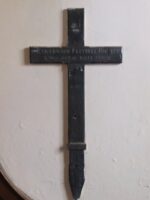 Inside the church is the first grave marker for Jacob Edward Pleydell-Bouverie (1887-1914) who, having previously served in India, was then killed at the beginning of the Great War WW1. He was mortally wounded during the German attack on Ypres and died in hospital at Boulogne in France, where he was buried. Apparently a member of the Coleshill House staff brought the cross home. He was named after his grandfather, the 4th Earl of Radnor, was educated at Eton and became Second Lieutenant in the King’s Royal Rifle Corps 4th Battalion.
Inside the church is the first grave marker for Jacob Edward Pleydell-Bouverie (1887-1914) who, having previously served in India, was then killed at the beginning of the Great War WW1. He was mortally wounded during the German attack on Ypres and died in hospital at Boulogne in France, where he was buried. Apparently a member of the Coleshill House staff brought the cross home. He was named after his grandfather, the 4th Earl of Radnor, was educated at Eton and became Second Lieutenant in the King’s Royal Rifle Corps 4th Battalion.
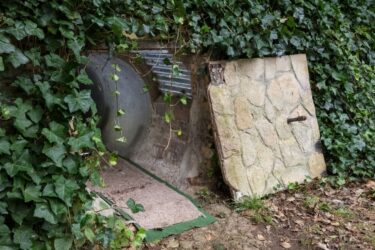 During WWII, the house became famous for the role it played in the training of people in subversive roles against a likely invasion by the Germans. It was a top secret establishment set up on the orders of Winston Churchill, Many people came here in secret, meeting at Highworth Post Office before being sent on a circuitous route to get to the house. Recently, an operational bunker was excavated and can be visited to see the conditions in which the secret army was supposed to work. More about Churchill’s Secret Army…
During WWII, the house became famous for the role it played in the training of people in subversive roles against a likely invasion by the Germans. It was a top secret establishment set up on the orders of Winston Churchill, Many people came here in secret, meeting at Highworth Post Office before being sent on a circuitous route to get to the house. Recently, an operational bunker was excavated and can be visited to see the conditions in which the secret army was supposed to work. More about Churchill’s Secret Army…
The house and park were sold by the Playdell-Bouverie family in 1946, and bought by Ernest Cook, grandson of the travel agent Thomas Cook. It burnt down in 1952 and was completely demolished in 1958. Cook gave the estate to the National Trust. The family seats of the Earls of Radnor are now Longford Castle near Salisbury and Alward House near Alderbury.
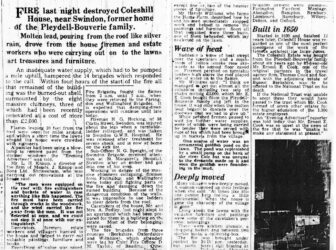 September 22nd 1952. Coleshill House on fire. The house had been handed over to the Ernest Cook Trust and was being completely re-decorated on the outside by a local firm of builders. A painter left a blow lamp burning on an attic window sill and went for his lunch; the lining of the window caught alight and set the house on fire. There was great difficulty in getting water to the fire, which had to be pumped a mile uphill from the river and it was completely destroyed. Luckily, however, most of the interior furnishings were saved by the efforts of the local people and firemen. The only injuries sustained were two firemen who were burnt when molten lead dripped off the roof. The last fireman to leave the building was Faringdon’s leading fireman, Sid Taylor. The picture shows a big turntable ladder at the top directing the hoses down into the centre of the building. The roof is completely gone and onlookers from the estate are just sadly looking at the remains of the house.
September 22nd 1952. Coleshill House on fire. The house had been handed over to the Ernest Cook Trust and was being completely re-decorated on the outside by a local firm of builders. A painter left a blow lamp burning on an attic window sill and went for his lunch; the lining of the window caught alight and set the house on fire. There was great difficulty in getting water to the fire, which had to be pumped a mile uphill from the river and it was completely destroyed. Luckily, however, most of the interior furnishings were saved by the efforts of the local people and firemen. The only injuries sustained were two firemen who were burnt when molten lead dripped off the roof. The last fireman to leave the building was Faringdon’s leading fireman, Sid Taylor. The picture shows a big turntable ladder at the top directing the hoses down into the centre of the building. The roof is completely gone and onlookers from the estate are just sadly looking at the remains of the house.
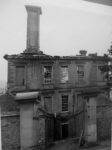 Unfortunately the building wasn’t insured so it was demolished in 1958 and never rebuilt. I am told that the cellars survive and if you walk around Coleshill Park you can see the footprint where the house was, which is outlined by large bushes now. More… Faringdon Fighting Fires.
Unfortunately the building wasn’t insured so it was demolished in 1958 and never rebuilt. I am told that the cellars survive and if you walk around Coleshill Park you can see the footprint where the house was, which is outlined by large bushes now. More… Faringdon Fighting Fires.
The Clock House
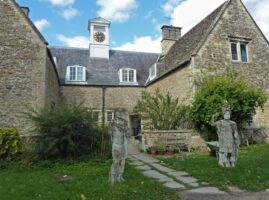 The Clock House and adjoining Stable Block is a Grade II Listed Building on the Coleshill Park estate. It was originally built in the late 17th Century as a laundry and brewhouse for the mansion. The clock tower was added in 1830. The gate house and entrance to the park is on the left before reaching the village when travelling from Faringdon. The foundations of Coleshill House can be seen in the grounds close-by
The Clock House and adjoining Stable Block is a Grade II Listed Building on the Coleshill Park estate. It was originally built in the late 17th Century as a laundry and brewhouse for the mansion. The clock tower was added in 1830. The gate house and entrance to the park is on the left before reaching the village when travelling from Faringdon. The foundations of Coleshill House can be seen in the grounds close-by
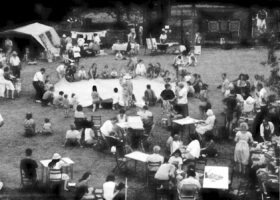 Faringdon Peace Group, who have been active since 1981, normally hold their annual fete here. In 1993 and a few years after, it was held closer to Faringdon at Colleymore Farm. Among the special attractions that year was a novel series of ‘parachute games’ involving both children and adults in all kinds of enjoyably silly activities based around a colourful and voluminous parachute (see centre of photo). There was folk music from ‘The Last Straw’ and from the Wantage Wind Quintet, as well as children’s races and a fancy dress parade. Donkey rides were also popular, and drinks and ice creams did a roaring trade under the blazing sunshine.4
Faringdon Peace Group, who have been active since 1981, normally hold their annual fete here. In 1993 and a few years after, it was held closer to Faringdon at Colleymore Farm. Among the special attractions that year was a novel series of ‘parachute games’ involving both children and adults in all kinds of enjoyably silly activities based around a colourful and voluminous parachute (see centre of photo). There was folk music from ‘The Last Straw’ and from the Wantage Wind Quintet, as well as children’s races and a fancy dress parade. Donkey rides were also popular, and drinks and ice creams did a roaring trade under the blazing sunshine.4
Coleshill Watermill
The 250 year old Mill House is a Grade II Listed Building situated beside the River Cole at the far end of the village, south of the main road. The adjoining watermill occupies three floors and comprises two pairs of millstones. The mill has probably been rebuilt a few times since it was mentioned in the Doomsday Survey of 1086. It finally ceased operating as a flour mill in the 1920s but was restored to working order for public demonstration in 2005.
Until the late 1700s, the mill was fed by a small artificial channel carrying water from the Cole, but by 1818 the mill leat had been largely extended to take the entire flow of the River Cole. Most of the old meandering river course had become filled in and floodplain drained for use by agriculture. In 1995-96, the river was restored to its original course leaving a smaller flow in the mill leat. This reduced flow alleviated the potential flooding of the mill house but has now sometimes apparently caused an issue with the full working of the mill. Extensive work was carried out over a wide area on both sides of the main road in order to restore the meandering river course and the historic floodplain habitats for freshwater plants and animals.8
All Saints Church
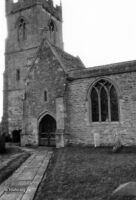 1986. All Saints Church in Coleshill dates back to the late 12th century, with further building carried out in the 13th century. The tower was added in the 15th century. The church has some interesting stained-glass windows and gargoyles. It also contains many monuments, memorials, and other references to the Playdell-Bouverie family dynasty.
1986. All Saints Church in Coleshill dates back to the late 12th century, with further building carried out in the 13th century. The tower was added in the 15th century. The church has some interesting stained-glass windows and gargoyles. It also contains many monuments, memorials, and other references to the Playdell-Bouverie family dynasty.
The Radnor Arms
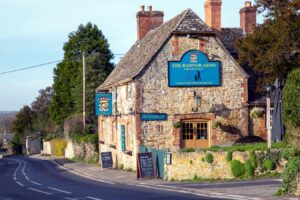 The Radnor Arms is a Grade II Listed Building on the way into the village from Faringdon, just past the entrance to the Coleshill Park estate. The old stone building, formerly the village smithy is now a public house serving a variety of beers on hand pumps. The walled garden across the road at Coleshill Organics, established since 1995 in the Coleshill Park estate contributes to the menu served here. The road on the right is Snowswick Lane, which leads to Buscot.
The Radnor Arms is a Grade II Listed Building on the way into the village from Faringdon, just past the entrance to the Coleshill Park estate. The old stone building, formerly the village smithy is now a public house serving a variety of beers on hand pumps. The walled garden across the road at Coleshill Organics, established since 1995 in the Coleshill Park estate contributes to the menu served here. The road on the right is Snowswick Lane, which leads to Buscot.
Coleshill School
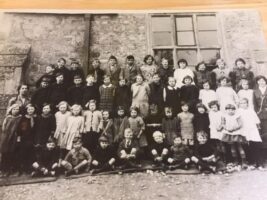 The pupils of Coleshill School in the 1920s. The school was situated in School Lane, the turning just before Snowswick Lane mentioned above. The school was erected in 1842, for 84 children with average attendance of 70. It was supported by the Hon. Duncombe Pleydell-Bouverie of Coleshill House. Miss Fanny Louisa Kiddell was mistress in 1895.7
The pupils of Coleshill School in the 1920s. The school was situated in School Lane, the turning just before Snowswick Lane mentioned above. The school was erected in 1842, for 84 children with average attendance of 70. It was supported by the Hon. Duncombe Pleydell-Bouverie of Coleshill House. Miss Fanny Louisa Kiddell was mistress in 1895.7
References:
- The English Place-Name Society search page – https://epns.nottingham.ac.uk/search
- Some photographs and text scanned directly from The Changing Faces of Faringdon and Surrounding Villages – Book 1 p100-101 by Rosemary Church, Jim Brown, Millie Bryan and Beryl Newman. Robert Boyd Publications 1999 – now out of print. Other photographs scanned from society archives.
- Swindon Evening Advertiser – Fire at Coleshill House.
- Faringdon Folly July 1993 p4 – A Peaceful Scene (at Colleymore Farm).
- Royal Berkshire History – Coleshill House – https://www.berkshirehistory.com/castles/coleshill_house.html
- The History and Historiography of Coleshill House, Berkshire by Karen Fielder.
- Kelly’s Directory of Berkshire 1895, p4.
- Restoring Europe’s Rivers – https://restorerivers.eu
- John Rocque’s Map of Berkshire published 1761 – https://www.rct.uk/collection/700042/rocques-map-of-berkshire
Researched and compiled by Ian Lee, July 2021.
